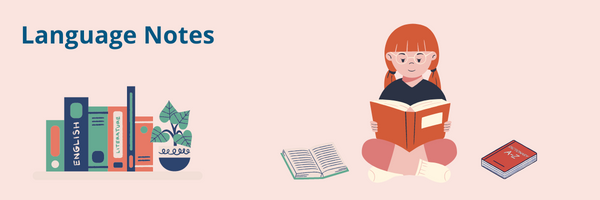“Part of speech” is one of the categories into which words of a language are grouped, according to the way they function in a sentence. Nouns, pronouns, verbs, adjectives, adverbs, prepositions, conjunctions, and interjections are the major parts of speech in English. This post contains explanations of these eight parts of speech written in simple language for upper elementary students. (Wordsmyth’s explanation of “a” and “the”–the indefinite and definite articles–is written at a higher level and designed for ESL and older students. This discussion is included in a separate post: Grammar Glossary: the definite and indefinite articles.)
ADJECTIVE
An adjective is a word that gives more information about a noun (or about a phrase that acts as a noun). An adjective tells us what kind of a noun is being discussed. Communication would be very boring if we couldn’t say that something was fantastic or miserable or fattening or downright boring!
In this sentence there are six adjectives.
I got a good grade on that long, terrible final exam that I took last week and that I thought was so hard!
ADVERB
An adverb is a word that gives more information about a verb, adjective or adverb, or about an entire sentence. It tells us how, to what degree, where, or when some action happens, for example, and allows us to make some comment on what we’re about to say, or tie what we’re saying now with what we said just before. Words like “very” or “extremely” that are used to refine the meaning of an adjective (or other adverb) are also called adverbs.
In this sentence there are nine adverbs!
Unfortunately, Natasha usually spoke so quickly that it was almost impossible to understand her, but now, when she speaks slowly, I can understand her pretty well.
CONJUNCTION
A conjunction is a word that links parts of sentences together. It can link one word to another, or larger parts of sentences to other parts. “And” is the most common conjunction, but there are many others with quite different meanings that serve the purpose of linking.
This sentence has six conjunctions.
My cousin and I went to a movie while he was in town, but we didn’t like it (or the noisy audience), so we left before it ended.
INTERJECTION
An interjection is a word or set phrase that stands alone, outside of any sentence. An interjection usually expresses a strong emotion—“Oh, no!”—or an unthinking reaction—“Huh?…Hmm… Ah, ha!”
NOUN
A noun is a word that names a person, place, or thing. “Things” that are called nouns may be objects like “chair” or “shoe,” but they may also be abstract ideas like “darkness,” “anger,” or “responsibility.” In some cases, words like “eating” and “driving” are nouns also because they can be thought of as things.
In this sentence there are seven nouns.
My sister likes running in the quiet of the park before she goes to work in the mornings.
The word “she” in this sentence acts like a noun, but words like “she,” “he,” “you,” and “me” are put into a special category called “pronouns.”
PREPOSITION
A preposition is a word that comes before a noun (or a phrase that acts like a noun), and it shows the connection, or relationship, between that noun and the previous word or phrase. In the sentence “He went to school,” the word “to” is a preposition, and it shows the connection between “school” and “He went.” Without prepositions, there would be confusion between sentences like “We ate in the kitchen” and “We ate the kitchen”!
In this sentence there are five prepositions.
We read about her wedding in the newspaper on Saturday, and we thought she looked like a real beauty in the photograph.
PRONOUN
A pronoun is a kind of noun, but its meaning is not specific to one person or thing. The word “I” is a pronoun, for example. When you say “I,” you are talking about yourself, but when your sister says “I,” she is talking about herself. The meaning of the word changes depending on who is using it. Words like “I,” “we,” she,” “it,” someone,” and “what” are pronouns. A pronoun can be used to substitute for another noun or for a phrase that acts like a noun. If we didn’t have pronouns, we would have to say our name every time we wanted to talk about ourselves!
In this sentence there are eight pronouns!
They went to the store to get something, but they didn’t tell me what they were going to buy or why they needed it.
VERB
A verb is a word that signals an action or state of being. It is also capable of expressing the time frame—non-past or past—of a sentence. It usually does this by changing forms; for example, from “is” to “was,” from “play” to “played,” from “go” to “went.”
In this sentence there are five verbs.
He seemed all right, but he looked a bit tired, and he talked so quietly that I wondered if something was wrong.

